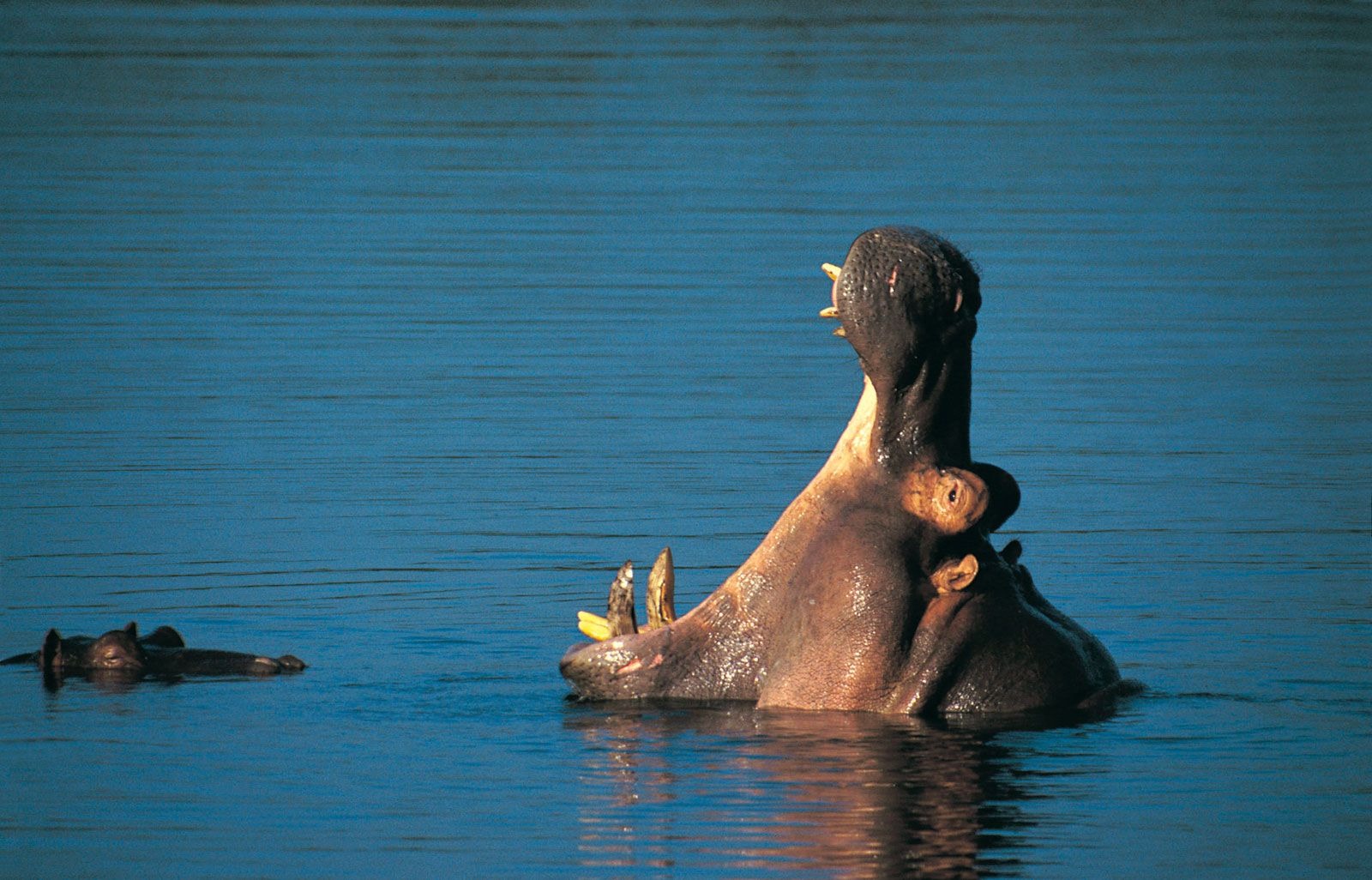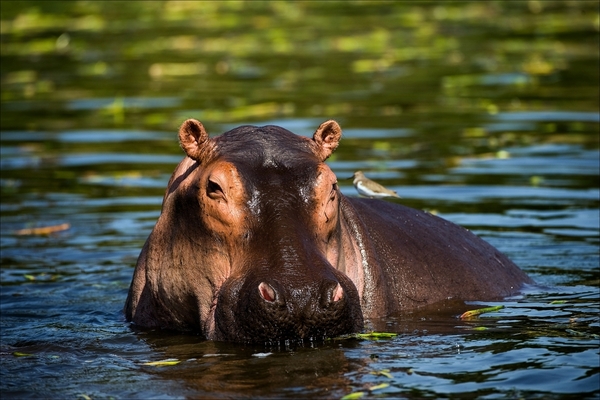
HT13. What Are You Really Seeing? This Underwater Illusion Is Actually a Hippopotamus
Nature often creates illusions that leave even seasoned wildlife enthusiasts doing a double take. In a viral image that recently caught the attention of viewers across the internet, many people reported seeing what appeared to be two strange, rounded creatures peering just above the surface of murky water—something that, at first glance, looked unfamiliar or even otherworldly.
However, a closer and more careful look reveals that this is not a scene from science fiction. What you’re seeing is, in fact, a hippopotamus — one of Africa’s most recognizable and fascinating animals — resting partially submerged in its aquatic habitat. The unusual shape, texture, and lighting of the image play a role in creating a visual trick, causing viewers to misinterpret what they’re seeing at first.
(Sources: National Geographic, BBC Earth, WWF)
Why Hippopotamuses Look So Unusual in Water
Hippopotamuses (Hippopotamus amphibius) are large, semi-aquatic mammals native to sub-Saharan Africa. They are most commonly found in rivers, lakes, and swamps, where they spend the majority of their time submerged to regulate body temperature and protect their sensitive skin from the sun.
When resting in water, a hippo’s head and part of its back may protrude just above the surface, often making it difficult to identify immediately—especially in still water with complex reflections and lighting. The bulky, rounded shape of their heads, combined with their eyes and nostrils positioned on top, allows them to breathe and see while mostly hidden beneath the waterline.
The animal’s thick, wrinkled skin, which may appear gray or brown depending on lighting, adds to the visual confusion, especially when water and mud create shadowy distortions. The result? A naturally camouflaged creature that, in the right conditions, can appear quite unfamiliar to the human eye.
(Sources: Smithsonian’s National Zoo, Animal Diversity Web)

Nature’s Optical Illusions: When Wildlife Looks Unfamiliar
This phenomenon is a perfect example of how visual perception can be influenced by context. Optical illusions in nature aren’t new. From stick insects that look like twigs to owls blending into tree bark, animals often appear deceptively unfamiliar in their environments.
In the case of the hippo, light reflections on water, combined with the unusual curvature of its head and partial submersion, distort the viewer’s immediate recognition. This creates an illusion of ambiguity, tricking the brain into seeing something that isn’t there—such as a pair of unfamiliar beings or underwater forms that resemble other creatures.
These illusions often circulate widely on social media, sparking curiosity and encouraging viewers to learn more about wildlife through the lens of unexpected visual experiences.
(Sources: Scientific American, Live Science)

Identifying Key Features of the Hippopotamus
For those trying to correctly identify animals in complex environments like rivers or wetlands, there are several visual cues to look for when spotting a hippopotamus:
- Eyes and Nostrils Positioned High: A hippo’s eyes, ears, and nostrils are located on top of its head, allowing it to stay mostly submerged while still seeing and breathing.
- Thick, Textured Skin: Their skin is hairless and deeply wrinkled, with a unique sheen when wet. It often appears gray, pinkish, or brown in color.
- Rounded Facial Shape: Hippos have wide, curved snouts and large mouths that sometimes open in a display of dominance or yawning behavior.
- Still Posture in Water: They may remain motionless for long periods, making them difficult to detect among reeds and reflections.
By becoming familiar with these features, nature lovers can enhance their wildlife spotting skills and develop a deeper appreciation for how animals adapt to their habitats.
(Sources: African Wildlife Foundation, IUCN Red List)

The Role of Hippopotamuses in Aquatic Ecosystems
Beyond their unique appearance, hippos play a crucial ecological role in freshwater ecosystems. Their grazing habits help control vegetation, and their movements between land and water contribute to nutrient cycling. However, they are also known to be highly territorial, particularly in water, and should never be approached in the wild.
Although often perceived as slow due to their size, hippos can move surprisingly quickly both on land and in water. They are considered among Africa’s most dangerous large mammals—not because they are aggressive without reason, but due to their powerful bodies and instinct to defend their space, especially around calves.
Conservation groups emphasize that habitat loss, water pollution, and poaching for ivory (found in their teeth) have placed pressure on some hippo populations. International organizations like WWF and the IUCN classify them as vulnerable, urging for increased conservation efforts to protect this essential species.
(Sources: World Wildlife Fund, IUCN)

Final Thoughts: When Nature Looks Like Something Else
The image that sparked curiosity online is a reminder of how nature often defies our expectations. What may appear confusing or strange at first glance often becomes something entirely familiar upon closer inspection. In this case, what initially seemed like an unusual or unfamiliar sight turned out to be one of Earth’s most fascinating animals simply doing what it does best—blending into its habitat.
Such moments encourage viewers to engage more deeply with the natural world, to look closer, and to question first impressions. In doing so, people not only learn to appreciate the beauty and complexity of wildlife but also build a stronger connection with nature—one that is rooted in observation, education, and conservation.

